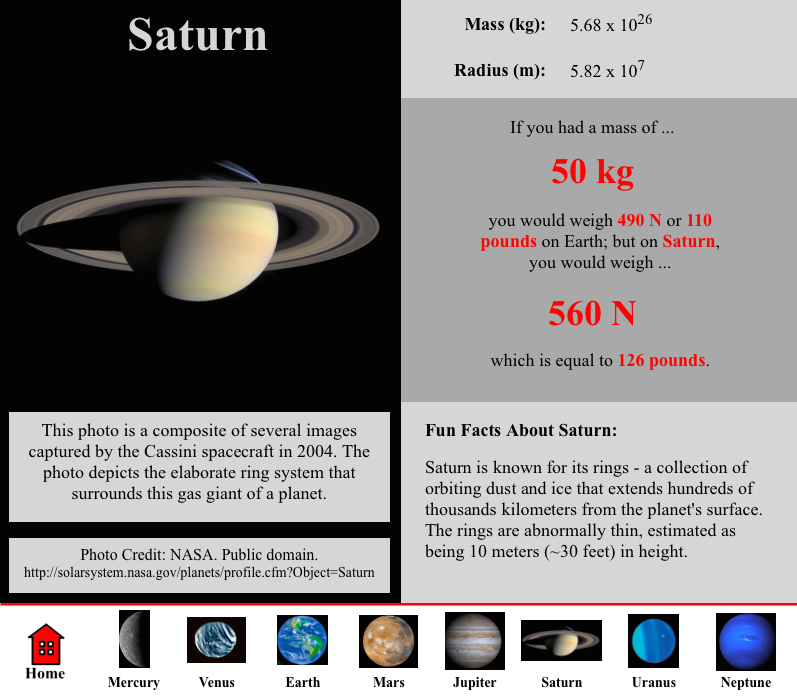Interactive - Circular and Satellite Motion
Explore uniform circular motion principles with the Circular Motion Interactive. Apply a force to a car to race it around an oval race track; compete with friends to finish the race in the least number of moves with the Race Track Interactive. Decide on the parameters of a barrel ride with our Barrel Ride Interactive and see if it's boring, thrilling, or deadly. Explore the forces acting on a roller coaster car with the Roller Coaster Model Interactive. Learn about the variables that affect the thrill and safety of a roller coaster ride with the Roller Coaster Design Interactive. Learn about weightlessness and weightiness with the Elevator Ride Interactive. Study Kepler's laws with the Orbital Motion Interactive. Launch the Gravitation Interactive and discover the universal law of gravitation. Explore universal gravitation, gravitational field strength, the value of g, and your weight on other planets with our many other out-of-this-world Interactives.
Activities
How can the motion of an object in a circle at a constant speed be described? Is such an object accelerating or not? If there is an acceleration, then what direction is it and why does it not change the object's speed? How does a change in mass, speed, or radius of the circle affect quantities such as the acceleration and net force? Explore these questions and build the foundation for further studies with the Uniform Circular Motion Interactive.

Explore the motion of a ball on a string moving in a horizontal circle. Then study a car moving along a banked turn without the need for friction. Finally, observe a plane moving in a horizontal circle. Change a variable and observe its impact upon other quantities. Explore on your own or use The Physics Classroom's student-friendly exercise.
Thanks to Physics teacher Martin Kirby for contributing this simulation to our Physics Interactives collection. You can learn more about the Horizontal Circle Simulation simulation at Mr. Kirby's Google Site.
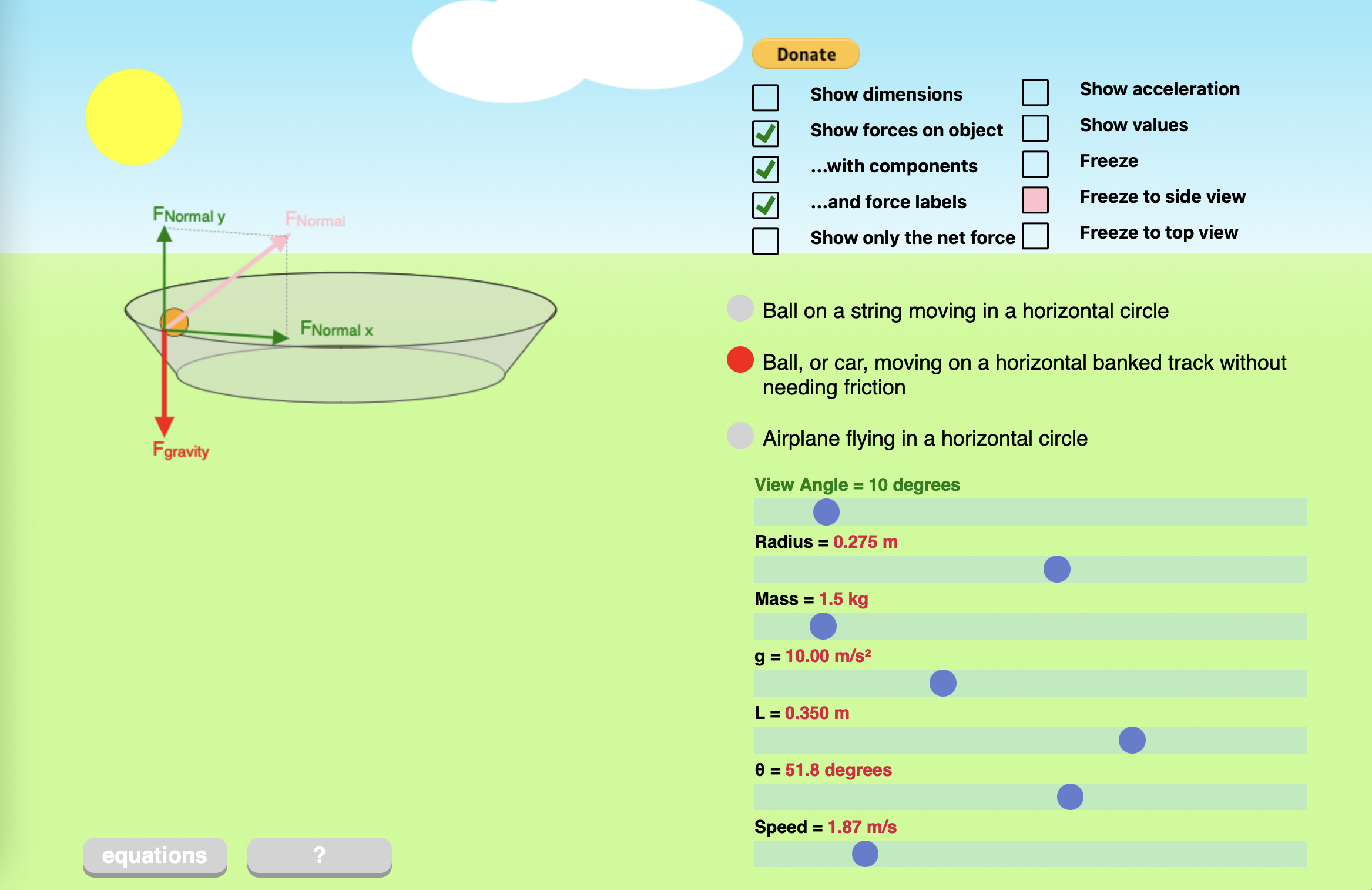
Explore the motion of a ball on a string moving in a vertical circle. Attach it to a light string, to a light, rigid rod, or simply allow it to roll along the wall of a vertical loop. Change a variable and observe its impact upon other quantities. Explore on your own or use The Physics Classroom's student-friendly exercise.
Thanks to Physics teacher Martin Kirby for contributing this simulation to our Physics Interactives collection. You can learn more about the Vertical Circle Simulation (Pendulum Motion) simulation at Mr. Kirby's Google Site.
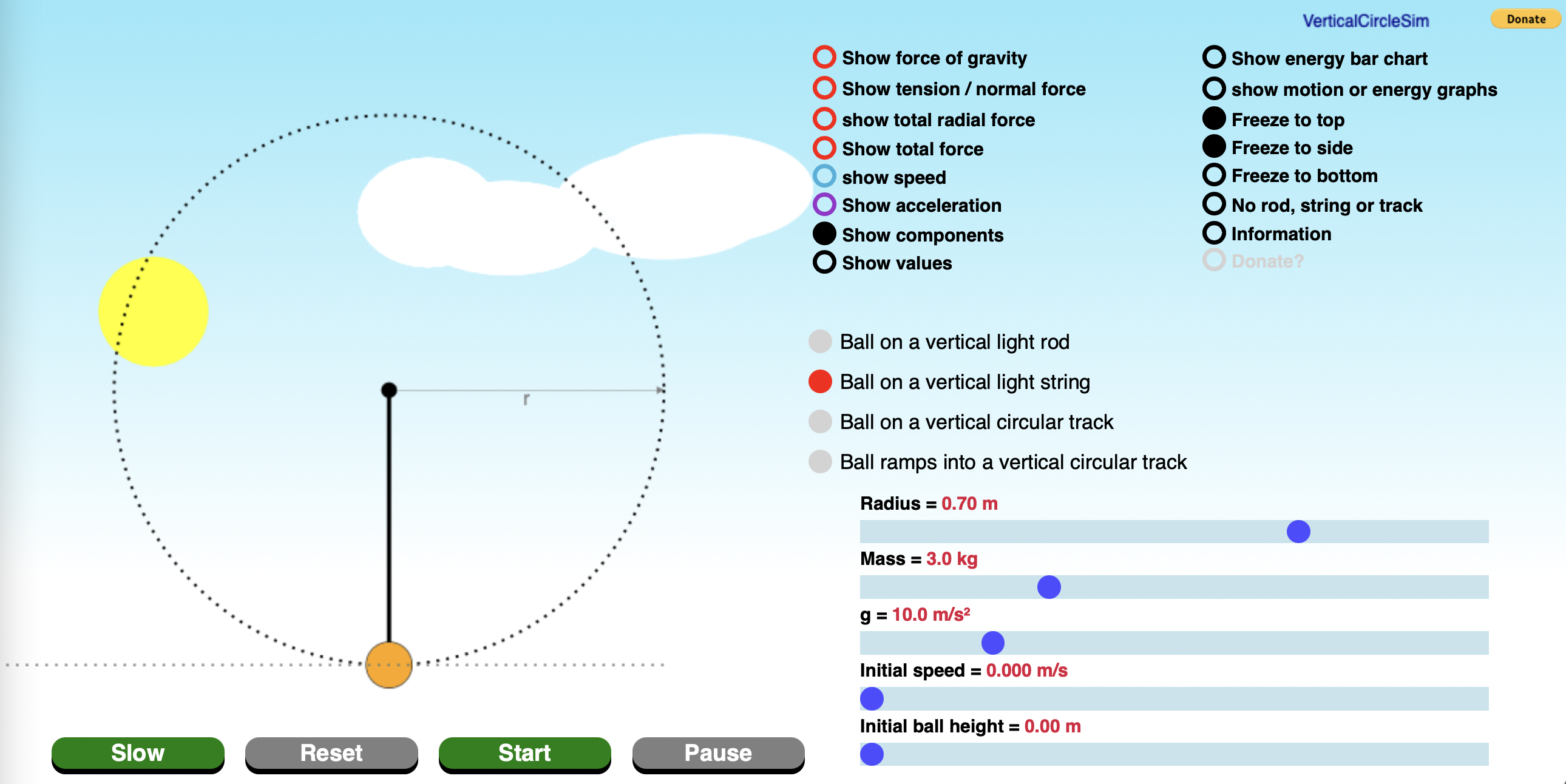
Walk through the door and enter the barrel. The door latches shut, the motor revs up, the barrel starts spinning, the floor is pulled from out from under the riders, and the riders scream. For some, it's more fun to watch the ride than to ride it. But now you get to design it. Modify the parameters that influence the thrill and safety of the ride. And best of all, nobody is going to file a lawsuit if you get a bit too ambitious. Have some phun!
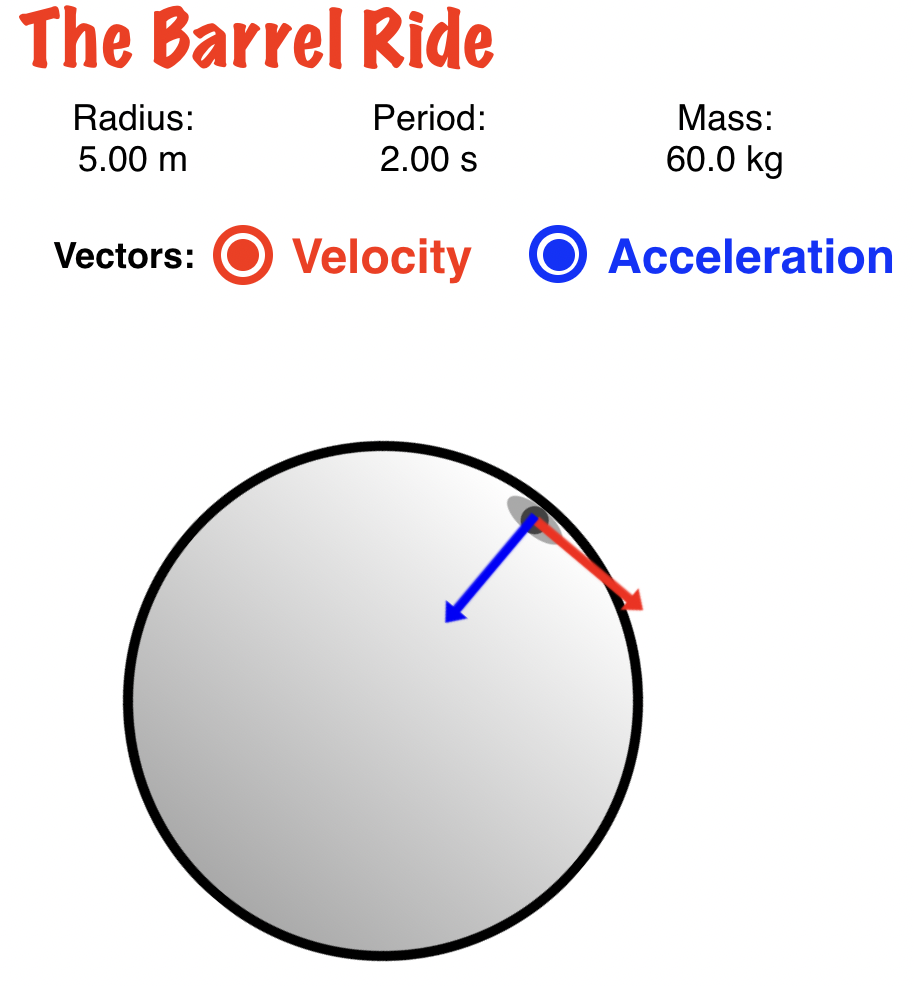
Race a car around an oval race track and demonstrate your knowledge of inertia and centripetal force. You're the driver and you use force buttons to accelerate, decelerate, and turn the car in this turn-based (no pun intended) game. Your objective is to stay on the track and use as few moves as possible This requires a good physics understanding and a commitment to watching your speed on the turns.
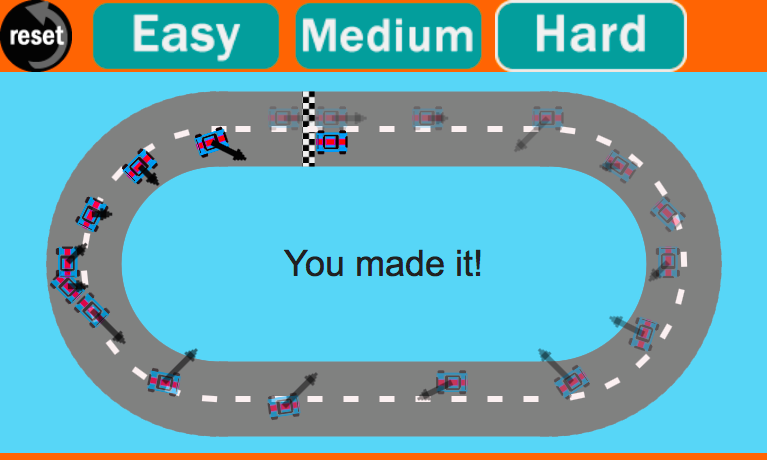
Up. Down. Spin around. Amidst all the rising, falling and turning of a roller coaster ride is heaps of physics. The Roller Coaster Model allows a learner to explore some of this physics. Whether it is the first drop, a loop, or a collection of dips and hills, you will be able to study it all with this Interactive. Use three pre-designed tracks or design your own. Let the car roll and watch as energy changes form and force, accceleration, and velocity vectors change their size and direction. Explore on your own or use The Physics Classroom's ready-to-use exercise.
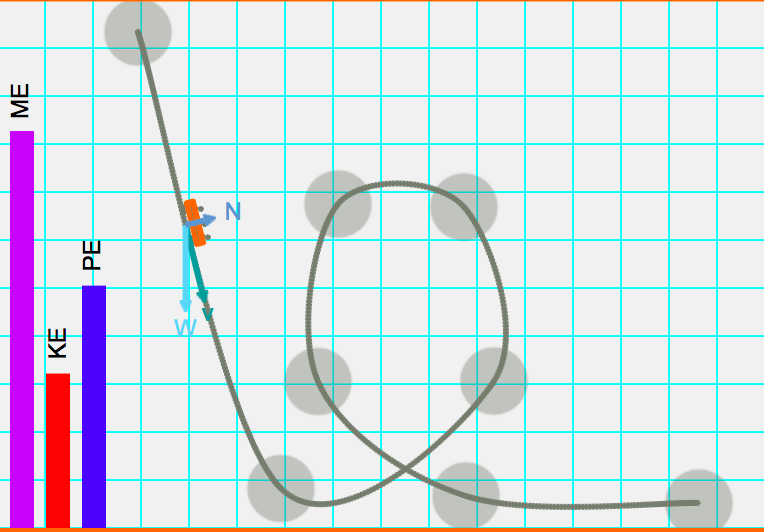
Can a roller coaster design be dangerous? Can a design not be thrilling? What makes one coaster design more thrilling or more dangerous than others? Find out the answers to these questions with the Roller Coaster Design Interactive in which you investigate the effect of design parameters upon the safety and thrill of a roller coaster ride. Modify the height and radius of curvature of loops and hills and investigate the effect of such changes upon the rider's experience. This Interactive is accompanied by an activity sheet.
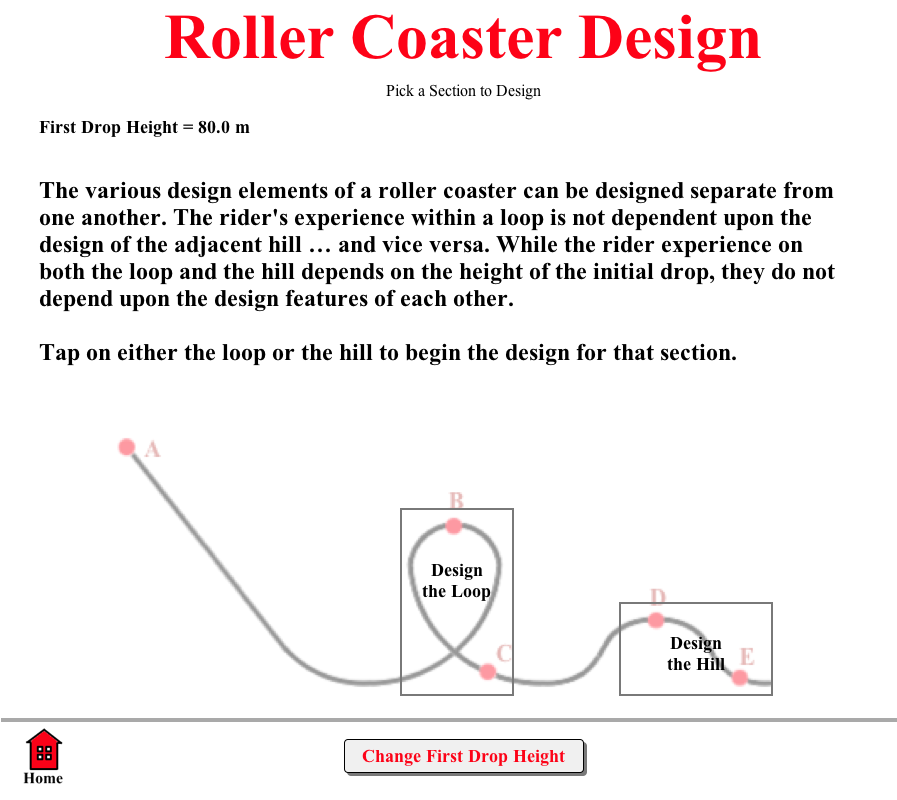
You might have wondered why you get that queasy feeling in an elevator as you start up and slow down. The phenomenon is explained by some simple physics. This Interactive allows a learner to explore the physics behind the sensations of weightlessness and weightiness ... and you won't get sick in the process.
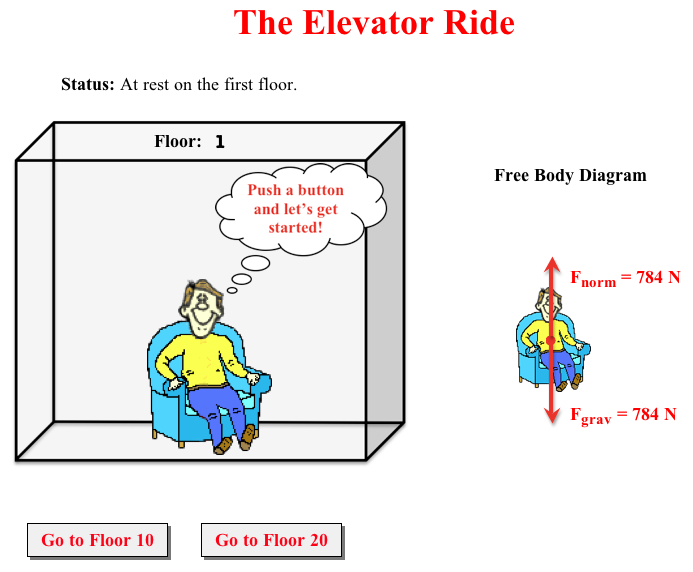
Everyone knows that the planets orbit the Sun in a circular orbit, right? Well ... not exactly. A 17th century mathematician by the name of Johannes Kepler was able to show that the orbits of planets about the sun are elliptical in shape. In this Interactive, learners will investigate the nature of an elliptical orbit.
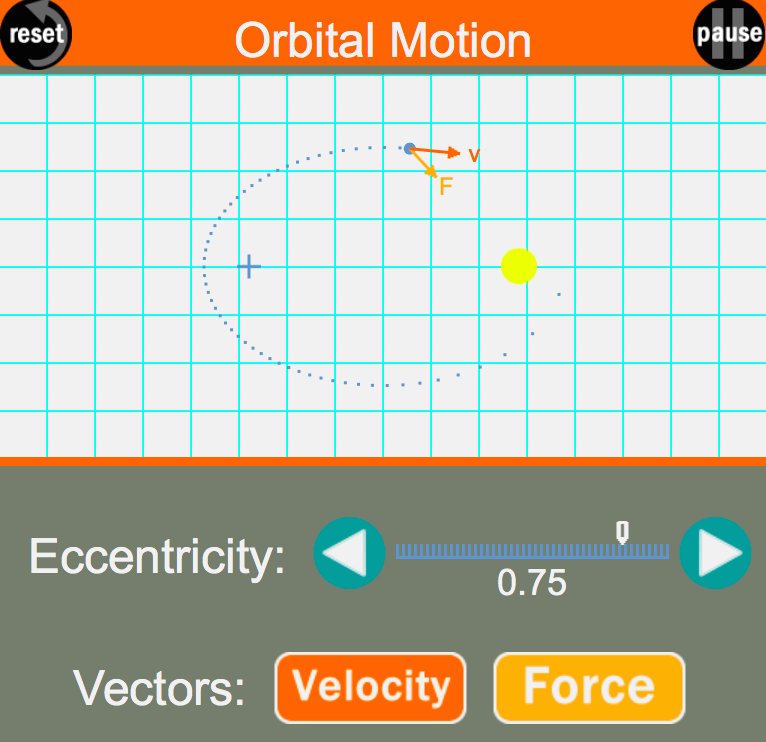
Throw a rock up in the air and what does it do? Obviously it slows down, reaches its highest point, and falls back to the ground. But what if you gave it a little extra umff? What if you could throw it really, really fast? Could you ever get the rock to escape the planet's gravitational pull? With this simulation on the topic of escape velocity, we'll equip you with the arm of a superhero and you can find out.
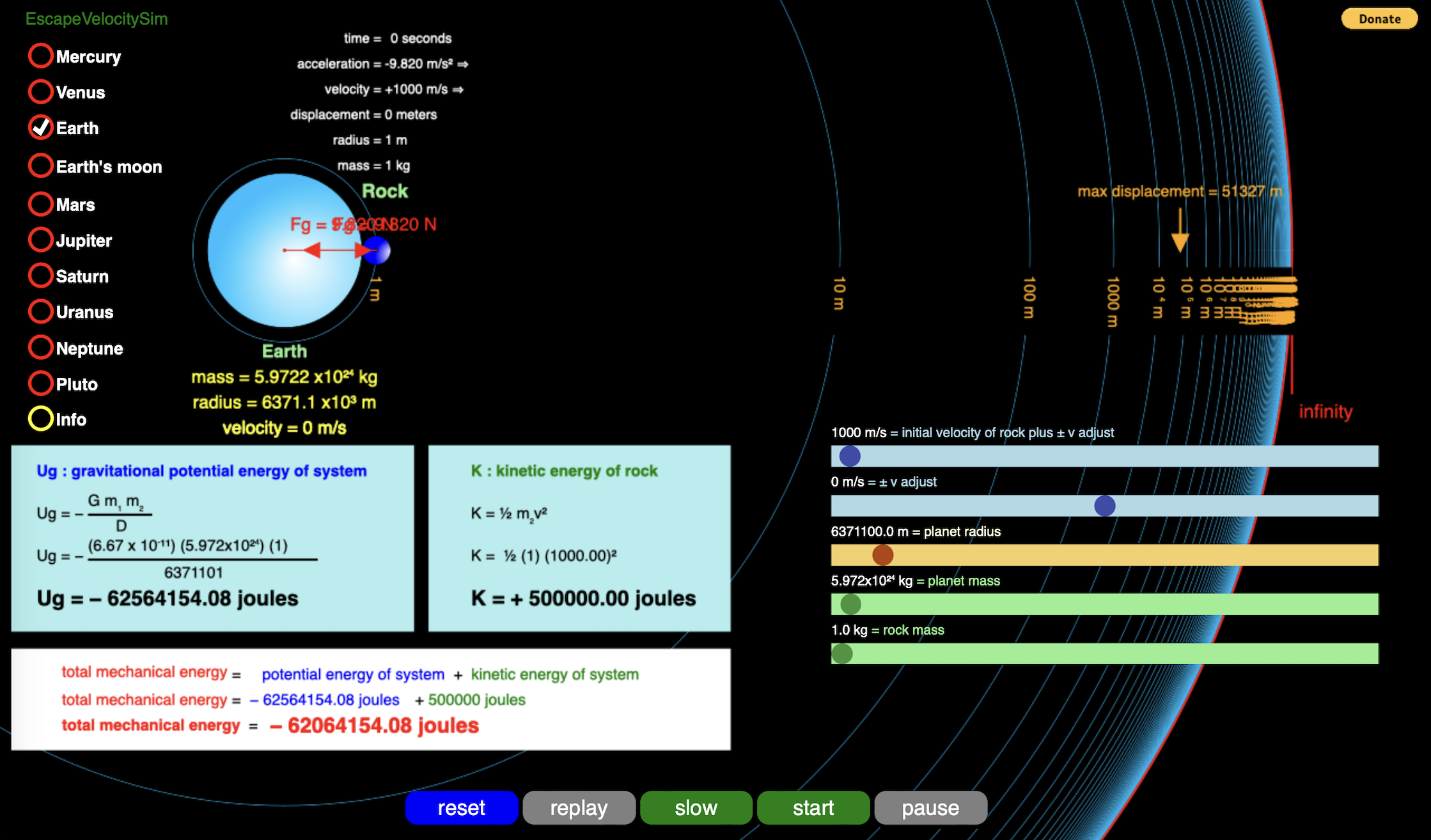
Everyone knows that the moon orbits the Earth because of a gravitational force. But what variables affect the value of this force? Is it a force that can be described by an equation? Explore these questions with the Gravitation Interactive. Change variables and observe the effect upon force values. After a careful study, you will be able to determine the relationships between quantities and write a gravitational force equation.
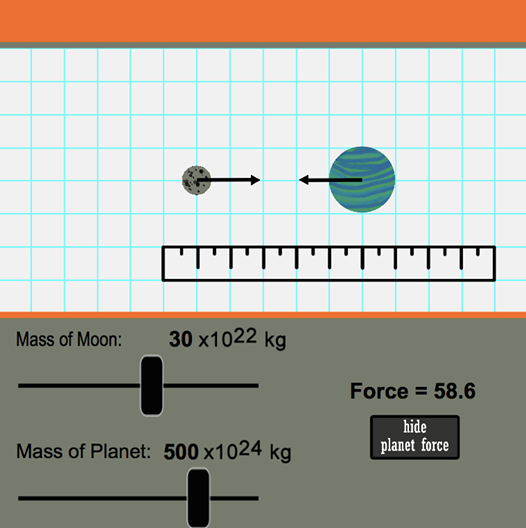
Most students know that the value of g is 9.8 m/s/s but very few know that the value is actually dependent upon location. While the variations in the value of g are small, the value is not an absolute 9.8 m/s/s. This Interactive allows a learner to explore how g varies with location around the globe. The challenge is to see if you can find the pattern.

If you're a physics student, you surely have heard about the 9.8 figure. That is, you've learned that gravity pulls downward with a force of 9.8 N on every 1-kg of mass (g = 9.8 N/kg). Or perhaps you've learned that all objects free fall with an acceleration of 9.8 m/s2 (g = 9.8 m/s2). After a few units of physics, you've heard the number so often that you begin to think it is some grand constant in the universe. But is it? Find out more about the value of g in this out-of-this-world Interactive.

Not happy with the scale reading these days? Perhaps you would like it better on another planet. Take a quick trip to some other planets and hop on their scales to see if it looks any better. This phun interactive is bound to teach you about other planets and about how your weight varies with location in the solar system.
